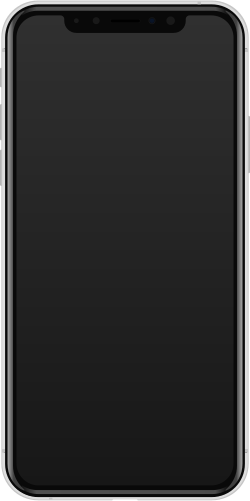| | |
 iPhone 11 in White | |
| Developer | Apple Inc. |
|---|---|
| Type | Smartphone |
| Series | iPhone |
| First released | September 20, 2019 |
| Discontinued | September 7, 2022 (global) June 2024 (Indonesia) |
| Predecessor | iPhone XR |
| Successor | iPhone 12 and 12 Mini |
| Related | iPhone 11 Pro and Pro Max |
| Compatible networks | 2G / 3G / 4G LTE |
| Form factor | Slate |
| Dimensions | H: 150.9 mm (5.94 in) W: 75.7 mm (2.98 in) D: 8.3 mm (0.33 in) |
| Weight | 194 g (6.8 oz) |
| Operating system | Original: iOS 13 Current: iOS 26.1, released November 3, 2025 [1] |
| System-on-chip | A13 Bionic |
| CPU | Hexa-core (2× high power Lightning cores at 2.66 GHz + 4× low power Thunder cores at 1.82 GHz) [2] [3] [4] |
| GPU | Apple-designed 4 core, up to 690 GFLOPS [5] |
| Modem | Dual SIM with eSIM Intel [6] Gigabit-Class LTE, up to 30 LTE bands |
| Memory | 4 GB LPDDR4X RAM |
| Storage | 64, 128 or 256 GB |
| Battery | 3110 mAh Li-ion (3.83 V) [7] |
| Charging | Fast charging, Qi wireless charging |
| Rear camera | 12 MP (1.4 μm) (1/2.55″), quad-LED flash, ƒ/1.8 aperture, Optical image stabilization (Wide-angle only) quad-LED flash, autofocus, IR filter, Burst mode, Five‑element lens (Ultra Wide); [8] six‑element lens (Wide), [8] 4K video recording at 24, 30 or 60 FPS or 1080p at 30 or 60 FPS, Slow-motion video (1080p at 120 FPS or 240 FPS), Time-lapse with stabilization, Panorama (up to 63 megapixels), Portrait Mode, Portrait Lighting, Face detection, Digital image stabilization, Optical image stabilization, Stereo audio recording, Night Mode |
| Front camera | 12 MP, f/2.2 aperture, burst mode, exposure control, face detection, auto-HDR, auto image stabilization, Retina flash, 4K video recording at 24, 30 or 60 FPS or 1080p HD at 30 or 60 FPS, Slow-motion video (1080p at 120 FPS) Portrait Mode, Portrait Lighting and Animoji |
| Display | 6.1 inch (155 mm) diagonal Liquid Retina: LED-backlit IPS LCD, 1792×828 px (326 ppi) 625 cd/m2 max. brightness (typical), with dual-ion exchange-strengthened glass and Haptic Touch. |
| Sound | Spatial Audio, Dolby Atmos |
| Connectivity | Wi-Fi 6 (802.11ax), Bluetooth 5.0, Ultra-wideband (UWB) |
| Water resistance | IP68, up to 2 m (6.6 ft) for 30 minutes |
| Other | FaceTime audio- or video-calling, USB-C to Lightning |
| Website | iPhone 11 at the Wayback Machine (archived October 9, 2020) |
| This article is part of a series on the |
| iPhone |
|---|
The iPhone 11 is a smartphone developed and marketed by Apple. It is the thirteenth generation of iPhone, succeeding the iPhone XR, and was unveiled on September 10, 2019, alongside the higher-end iPhone 11 Pro at the Steve Jobs Theater in Apple Park, Cupertino, by Apple CEO Tim Cook. Preorders began on September 13, 2019, and the phone was officially released on September 20, 2019, one day after the official public release of iOS 13.
Contents
- History
- Design
- Specifications
- Hardware
- Software
- Release and reception
- Availability by region
- Controversy
- Removal of the power adapter and EarPods
- See also
- References
- External links
Despite minimal exterior changes from the preceding iPhone XR, substantial design changes within the phone took place, including the addition of the more powerful Apple A13 Bionic chip as well as an ultra-wide dual-camera system. [9] In October 2020, Apple halted the inclusion of both Apple EarPods and the wall adapter, citing environmental goals. [10] [11]
As of March 2022, the iPhone 11 had sold approximately 159.2 million units worldwide, making it the tenth best-selling smartphone of all time. [12] While Apple Inc. has not released model-specific sales figures for the iPhone 11 after this date, the company announced in July 2025 that total iPhone sales have surpassed 3 billion units globally. [13]
The iPhone 11 as well as the iPhone 12 mini and iPhone 13 Pro with its Max variant were discontinued and removed from Apple's website after the announcement of the iPhone 14 and iPhone 14 Pro on September 7, 2022.
